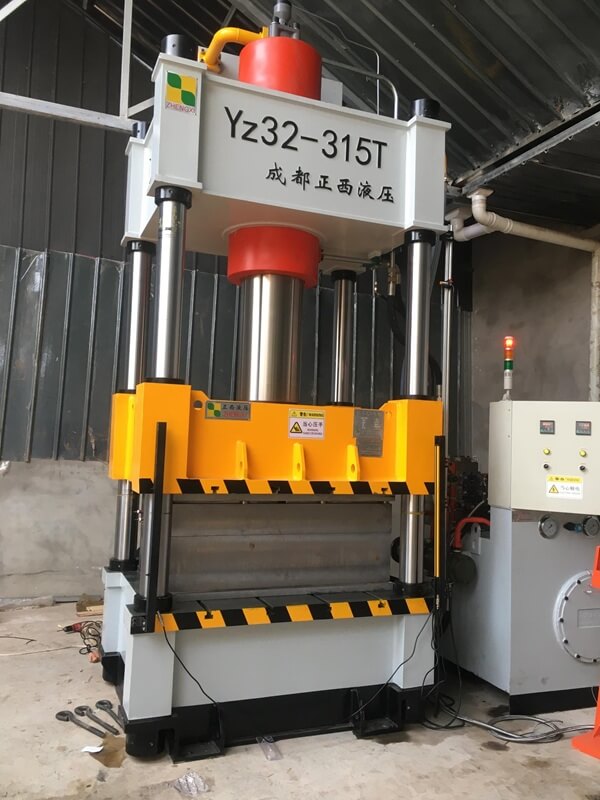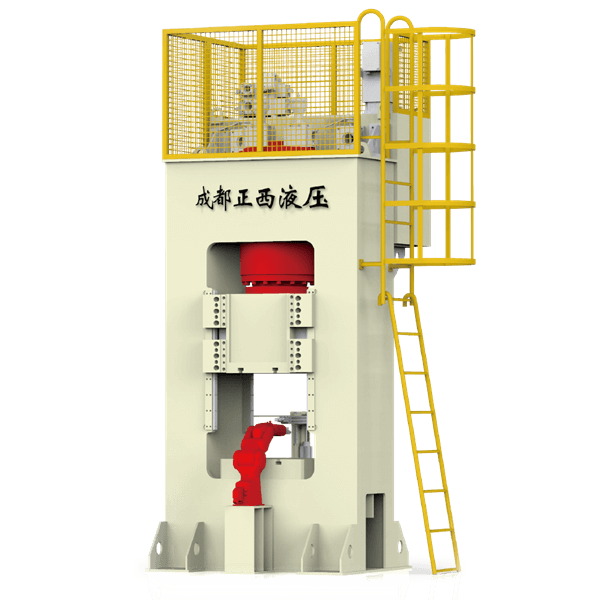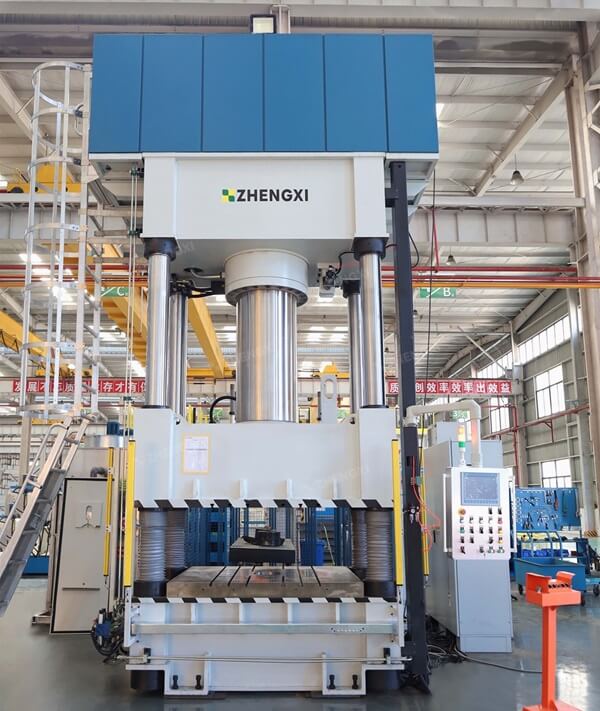Deep drawing processing is a stamping processing method that uses a mold to form a flat blank into an open hollow part. As one of the main stamping processes, deep drawing is widely used. Thin-walled parts of cylindrical, rectangular, stepped, spherical, conical, parabolic, and other irregular shapes can be made by deep drawing. If combined with other stamping forming processes, parts with more complex shapes can also be manufactured.
Stretching and forming processing of products using stamping equipment, including deep drawing, re-drawing, reverse drawing, and thinning and deep drawing.

Deep-drawing processing: Use the pressing plate device to use the punching force of the punch to pull part or all of the flat material into the cavity of the concave mold to form it into a container with a bottom. The processing of the side wall of the container parallel to the stretching direction is a simple stretching process. The stretching processing of conical (or pyramidal) containers, hemispherical containers, and parabolic containers also includes expanding processing.
Re-deep drawing processing: that is, for deep-drawing products that cannot be completed by one-time drawing processing, it is necessary to re-draw the formed products after drawing processing to increase the depth of the formed container.
Reverse deep drawing processing: Reverse drawing the drawn workpiece in the previous process, turning the inner side of the workpiece into the outer side, and making the outer diameter smaller.
Thinning and deep-drawing processing: Use a punch to squeeze the formed container into a concave mold cavity that is slightly smaller than the outer diameter of the container. The outer diameter of the container with the bottom is reduced, and the wall thickness is thinned at the same time, which not only eliminates the deviation of the wall thickness but also makes the surface of the container smooth.
When using stamping equipment for metal stamping and deep drawing processing, the following 16 types are included:
1. Cylindrical deep drawing
Deep drawing of flanged (flange) cylindrical products. Both the flange and the bottom are planar, and the side wall of the cylinder is axisymmetric. The deformation is evenly distributed on the same circumference, and the blank on the flange produces deep drawing deformation.

2. Oval deep drawing
The deformation of the blank on the flange is deep drawing deformation, but the deformation amount and deformation ratio change correspondingly along the contour shape. The larger the curvature, the larger the plastic deformation of the blank. Conversely, the smaller the curvature, the smaller the plastic deformation of the blank.

3. Rectangular deep drawing
Low rectangular parts formed in one deep drawing. When stretching, the tensile resistance at the rounded corners of the flange deformation zone is greater than that at the straight sides, and the degree of deformation at the rounded corners is greater than that at the straight sides.

4. Yamagata deep drawing
When the side wall of the stamping part is inclined, the side wall is suspended during the stamping process and does not stick to the mold. Do not apply the mold until the end of the forming. The deformation characteristics of different parts of the side wall are not exactly the same during forming.

5. Hill-shaped deep drawing
The deformation of the blank during the forming process of the dome-shaped cover plate is not a simple stretching deformation, but a composite forming in which deep drawing and bulging deformation exist simultaneously. The deformation of the blank on the binder surface is deep-drawing deformation (tensile stress in the radial direction and compressive stress in the tangential direction), while the deformation of the blank inside the contour (especially the central area) is bulging deformation (both radial and tangential are the tensile stress).

6. Hemispherical deep drawing with flange
When the spherical part is deep-drawn, the blank is partially in contact with the spherical top of the punch, and most of the rest is in a suspended unconstrained free state. Therefore, the main process problem in the stretching of such spherical parts is the severe thinning of the local contact part or the destabilization and wrinkling of the curved part.
7. Deep drawing of flange
The flange part of the deep-drawn product is processed by shallow drawing. Its stress-strain situation is similar to that of compression flanging. Due to tangential compressive stress, it is easy to wrinkle, so the forming limit is mainly limited by compression wrinkling.
8. Edge drawing
The flange part of the product drawn in the previous process is re-drawn in a corner shape. This kind of processing requires the material to have good plasticity.
9. Deep drawing
Deep-drawn products that exceed the limit of deep-drawing processing require more than two times multiple stretching to complete. Products that have been drawn in the depth direction of the front station are re-drawn in the depth direction. Wide-flange stretched parts are stretched to the required flange diameter in the first stretch. During subsequent re-stretching, the flange diameter remains unchanged.
10. Conical deep drawing
For deep conical parts with h/d>0.8 and α=10°~30°, due to the large depth, the degree of deformation of the blank is relatively large. Excessive thinning and even cracking. It needs to go through many transitions to gradually take shape. The step drawing method is to first stretch the blank into a stepped transition piece. Its stepped shape is tangent to the inner shape of the tapered part and finally expands to form a tapered shape. The number of stretches and processes of the stepped transition piece is the same as the deep drawing of the stepped cylindrical piece.
11. Rectangular re-drawing process
The deformation of high rectangular parts formed by multiple deep drawings is not only different from that of deep cylindrical parts but also very different from that of low box-shaped parts. The picture shows that when the multi-station automatic transfer press is processing a high rectangular box, the shape, and size of the product change with the stretching height during the multiple stretching processes.

12. Surface forming processing
Curved surface drawing forming is a stamping forming method that shrinks the outer flange part of the metal flat blank and elongates the inner flange part to become a hollow product with a non-straight wall and non-flat bottom curved surface shape.

13. Step-deep drawing
The left initial drawn product is re-drawn to form a stepped bottom on the right. The deeper part is deformed at the initial stage of drawing, and the shallower part is deformed at the later stage of drawing. The sidewall at the step change portion is prone to deformation induced by shear stress.

14. Reverse deep drawing
It is a kind of re-drawing to reversely draw the workpiece that has been drawn in the previous process. The reverse stretching method can increase the radial tensile stress, which can achieve better results in preventing wrinkling. It is also possible to increase the stretch factor for re-stretching.
15. Thinning and deep drawing
Different from ordinary deep drawing, thinning deep drawing is mainly to change the thickness of the tube wall of the drawn part during the deep drawing process. The gap between the punch and die is smaller than the thickness of the blank. When the straight wall part of the blank passes through the gap, it is under a relatively large uniform compressive stress. While the wall thickness becomes thinner during the stretching process, the deviation of the container wall thickness is eliminated, the smoothness of the container surface is increased, and the precision and strength are improved.

16. Panel deep drawing
Panel products are sheet metal stampings with complex surface shapes. In the deep drawing process, the deformation of the blank is complicated, and its forming properties are no longer simple deep drawing, but a composite forming in which deep drawing and bulging exist simultaneously.




